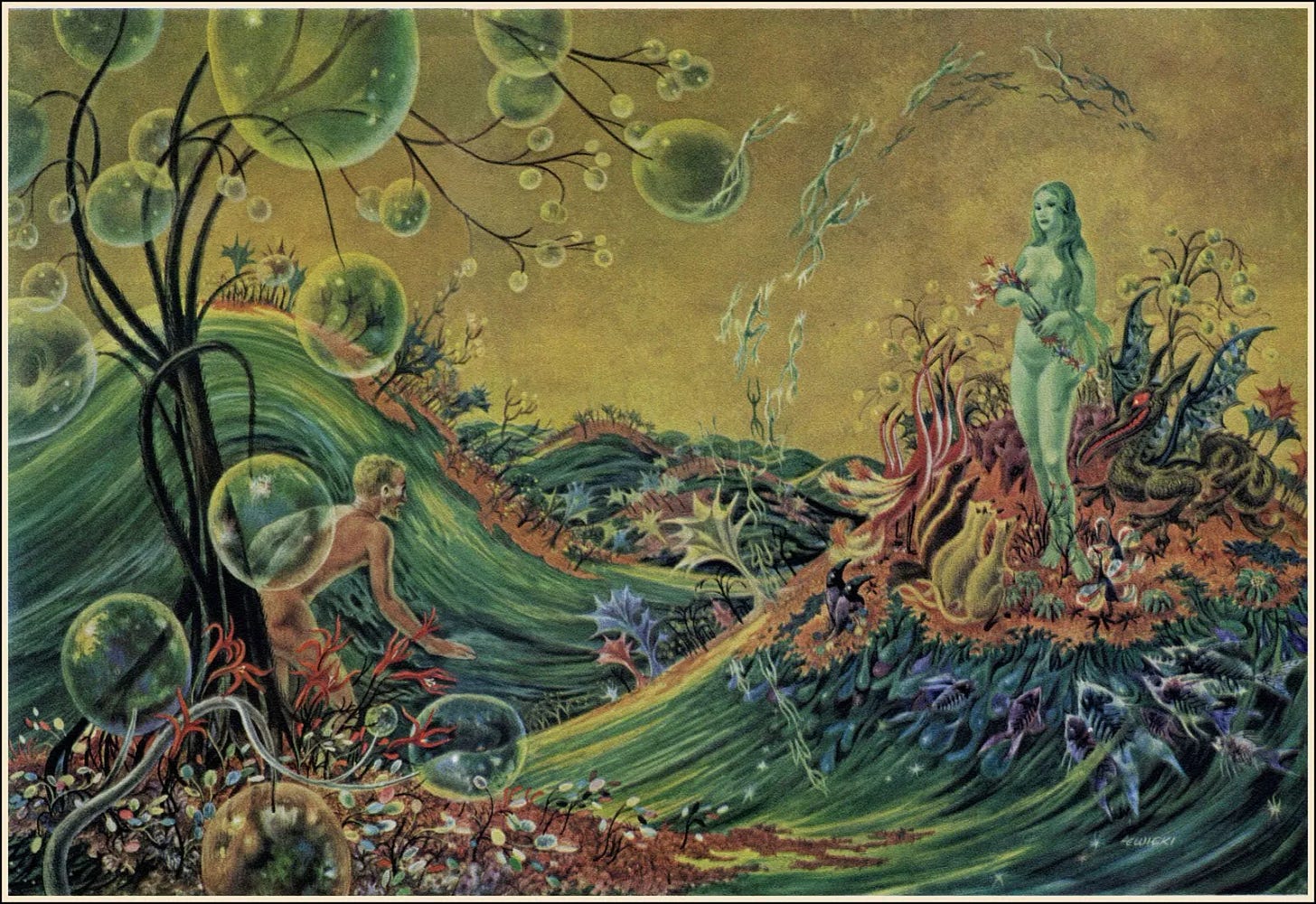How C.S. Lewis Redeemed Images Through Imagination
When we look at the phenomena and confuse their appearance for what they represent, we take the lifeblood out of them.
C.S. Lewis said in The Weight of Glory:
It is a serious thing to live in a society of possible gods and goddesses, to remember that the dullest and most uninteresting person you talk to may one day be a creature which, if you saw it now, you would be strongly tempted to worship, or else a horror and a corruption such as you now meet, if at all, only in a nightmare.
What did he mean?
Owen Barfield, who had a profound influence on Lewis, believed that imagination is our ability to see through the images (things) and commune with the invisible realm.
Without imagination images are dead. Imagination is their lifeblood. Their substance. Their content.
When we look at the phenomena and confuse their appearance for what they represent, we take the life out of them. The images are lost. They have been turned into idols by our refusal to see through them.
The moment we say: “The appearance of the tree equals the tree,” we make the assumption that there’s nothing else to the tree than meets the eye. This mental concept is no more than an assumption (we don’t really know if the appearance of a tree equals a tree).
But we choose to see the tree through a non-participatory, non-relational lens. In doing so, we refuse to go from the image to imagination.
When I refuse to transcend the images through imagination (properly speaking, with faith as the ability to see the invisible), I refuse to go beyond the symbol to what it symbolizes. I take a sign for the thing it represents.
In The Weight of Glory, C.S. Lewis shows what happens when we redeem images through imagination.
When we look at people without imagination, we conclude that we see in them all there is to see. They are just dull individuals.
But every once in a while, we are granted a Divine vision of them - we see a glimpse of the Divine in them.
And then, the most ordinary person transforms before our very eyes, and we are almost tempted to worship them.
C.S. Lewis described the same phenomenon in That Hideous Strength in the chapter on the descent of the gods.
When Perelandra (Venus), the goddess of Love, came down from the Third Heaven, the hearts of all the people gathered in Ransom’s house were smitten with such love for each other and such fearlessness that they felt they could laugh death in the face. Everyone was transformed.
Jane looked at the Dimbles and
“a sort of brightness flowed from them that dazzled her, as if the god and goddess in them burned through their bodies and through their clothes and shone before her in a young double-natured nakedness of rose-red spirit that overcame her. And all about them danced…”
According to Barfield, “Christ in us” is that seed of the Word sown deep into our soul that is able to grasp the Whole – and truly “understand the parable of the world.”
It is that Seed that looks at the Sun and sees the heavenly Bridegroom.
It is that Seed that looks at trees and sees Ents.
It is that Seed that hears the gentle murmur of a brook and hears the Music of Iluvatar.
It is that seed that looks at people around them and sees who they really are behind their appearances.





